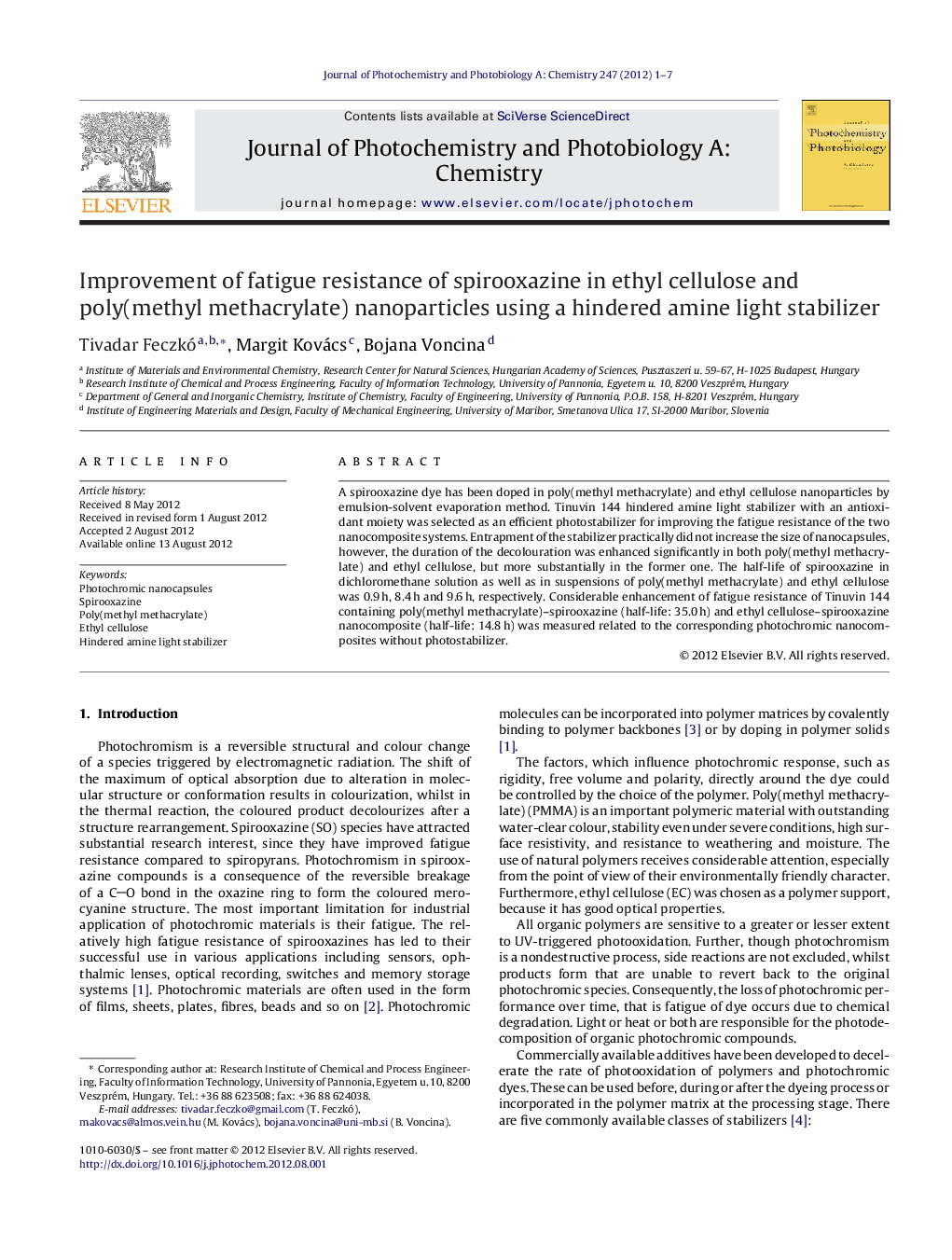| Article ID | Journal | Published Year | Pages | File Type |
|---|---|---|---|---|
| 26797 | Journal of Photochemistry and Photobiology A: Chemistry | 2012 | 7 Pages |
A spirooxazine dye has been doped in poly(methyl methacrylate) and ethyl cellulose nanoparticles by emulsion-solvent evaporation method. Tinuvin 144 hindered amine light stabilizer with an antioxidant moiety was selected as an efficient photostabilizer for improving the fatigue resistance of the two nanocomposite systems. Entrapment of the stabilizer practically did not increase the size of nanocapsules, however, the duration of the decolouration was enhanced significantly in both poly(methyl methacrylate) and ethyl cellulose, but more substantially in the former one. The half-life of spirooxazine in dichloromethane solution as well as in suspensions of poly(methyl methacrylate) and ethyl cellulose was 0.9 h, 8.4 h and 9.6 h, respectively. Considerable enhancement of fatigue resistance of Tinuvin 144 containing poly(methyl methacrylate)–spirooxazine (half-life: 35.0 h) and ethyl cellulose–spirooxazine nanocomposite (half-life: 14.8 h) was measured related to the corresponding photochromic nanocomposites without photostabilizer.
► Tinuvin 144 was the most efficient photostabilizer in photochromic nanocapsules. ► Tinuvin 144 decreased the rate of decolouration in PMMA more considerably than in EC. ► Half-life of spirooxazine was multiplied by a factor of 10 in both nanocomposites. ► It was further improved by a factor of 1.5 in EC and of 4.2 in PMMA due to HALS. ► Tinuvin 144 exerted stabilizing influence on the polymers and the spirooxazine, too.
